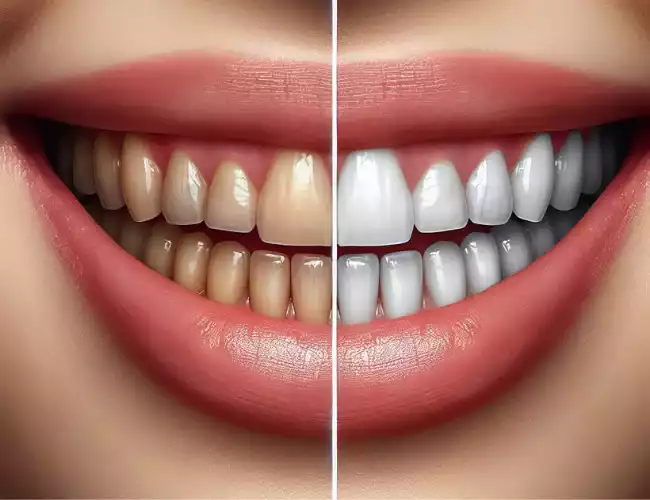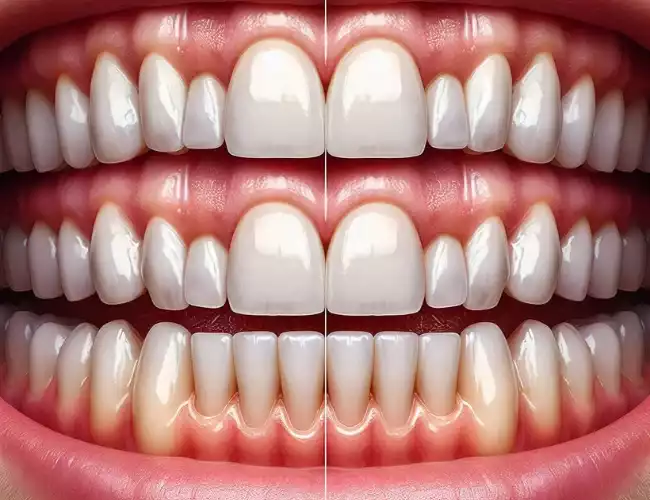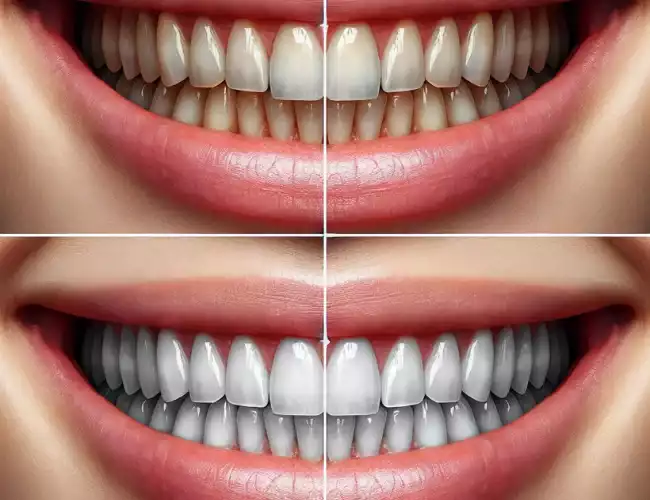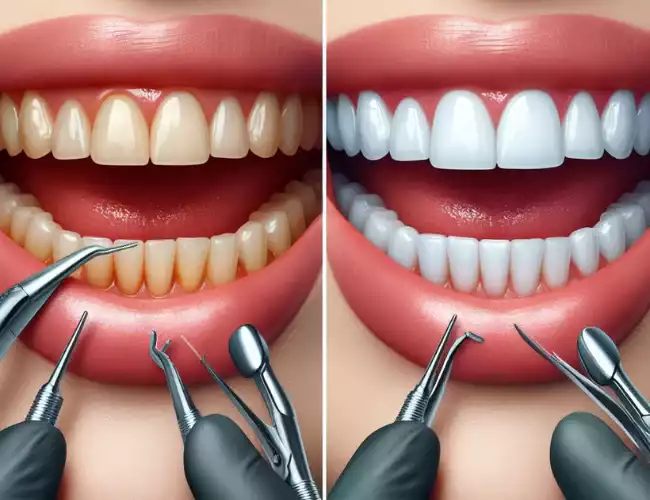Introduction
Teeth Bonding Before and After, Teeth bonding is a popular cosmetic dentistry procedure that can enhance the appearance of your smile. Whether you’re dealing with small teeth, gaps, or other imperfections, bonding offers a versatile and effective solution.

We’ll explore the transformative effects of teeth bonding through a series of before-and-after scenarios, focusing on various aspects such as small teeth, front teeth, gaps, and composite bonding.
Our Top Picks: Visit here
Beauty Tips and Home Remedies I Tooth Abscess Remedy Reviews: Ingredients, Insights, and More I How To Stop Tooth Pain Fast At Home Naturally: A Complete Guide I What to Eat After Wisdom Teeth Removal I How To Get Rid Of Stains On Teeth in No Time: A Complete Guide I Kill Tooth Pain Nerve in 3 Seconds Permanently: Rapid Relief
Overview of Teeth Bonding Before and After
In the world of cosmetic dentistry, Teeth Bonding Before and After: Transformative Smiles and Comprehensive Guide stands as a beacon for those seeking a radiant and confident smile transformation.
This comprehensive guide delves into the diverse realms of dental bonding, capturing the remarkable changes through before-and-after scenarios.
Whether addressing small teeth, gaps, or enhancing the appearance of front teeth, this article serves as a visual journey, illustrating the powerful impact of teeth bonding.
From the versatile nature of composite bonding to the personalized transformations of bonded teeth, this guide provides insights into the transformative capabilities of dental bonding procedures.
As we explore the myriad aspects of teeth bonding, it becomes clear that this cosmetic dentistry option is not just a treatment; it’s a pathway to renewed self-assurance and a brighter, more confident smile.
Understanding Teeth Bonding
Dental bonding is a minimally invasive procedure where a tooth-colored resin is applied to the teeth and hardened with a special light. This process helps improve the overall aesthetics of the teeth by addressing issues such as discoloration, chipping, or gaps. The before-and-after transformations highlight the significant impact that bonding can have on one’s smile.
1. Small Teeth Bonding Before and After
For individuals with naturally small teeth, bonding provides an excellent solution to enhance their size and shape. The before-and-after images showcase how bonding can add volume and symmetry to small teeth, resulting in a more proportionate and aesthetically pleasing smile.

2. Front Teeth Bonding Before and After
Front teeth play a crucial role in the overall appearance of a smile. Bonding on front teeth can address chips, cracks, or discoloration, restoring a seamless and natural look. The before-and-after pictures demonstrate the dramatic improvement in the appearance of front teeth after bonding, boosting confidence and self-esteem.
3. Bonding on Teeth Before and After Gap
Gaps between teeth, known as diastema, can be a source of self-consciousness for many individuals. Bonding on teeth before and after addressing a gap illustrates how the procedure can effectively close spaces, resulting in a more harmonious and uniform smile.
4. Composite Bonding Teeth Before and After
Composite bonding is a specific type of bonding that utilizes a tooth-colored composite resin to address various dental issues. The before-and-after images of composite bonding demonstrate its versatility in repairing chips, reshaping teeth, and improving overall dental aesthetics.
5. Bonded Teeth Before and After
Whether it’s addressing minor imperfections or completely transforming the appearance of a smile, the general term “bonded teeth” encompasses a wide range of cosmetic enhancements. The before-and-after pictures showcase the versatility of bonded teeth, emphasizing the personalized nature of dental bonding procedures.
What is Composite Bonding?
1. Definition: Composite bonding is a cosmetic dental procedure aimed at improving the visual appearance of teeth using a tooth-colored composite resin.
2. Procedural Overview
- Preparation: The tooth surface is slightly roughened to enhance bonding.
- Bonding Agent Application: A bonding agent is applied to facilitate adhesion.
- Composite Resin Application: Tooth-colored composite resin is applied and shaped to address specific aesthetic concerns.
- Curing Process: The resin is hardened using a special curing light.
3. Applications
- Chipped or Cracked Teeth: Commonly used to repair and restore teeth with chips or cracks.
- Discoloration: Effective in masking or correcting tooth discoloration for a more natural appearance.
- Gaps between Teeth: Used to close small gaps and spaces between teeth (diastema).
- Minor Misalignments: Addresses minor misalignments, providing an alternative to more extensive orthodontic treatments.

4. Natural Aesthetics
- Tooth Color Matching: Composite resin closely matches the natural color of the patient’s teeth.
- Seamless Integration: Provides a seamless and natural-looking result, particularly suitable for front teeth enhancements.
5. Conservative Approach
- Minimal Tooth Structure Removal: Requires less removal of the tooth structure compared to some other cosmetic procedures like veneers.
- Preservation of Tooth Integrity: A conservative option for patients seeking aesthetic improvements without significant alterations.
6. Versatility
- Visible Areas of the Mouth: Ideal for cosmetic enhancements in visible areas, particularly the front teeth.
- Wide Range of Concerns: Versatile in addressing various aesthetic concerns in a single procedure.
7. Popularity
Minimally Invasive: Gains popularity due to its minimally invasive nature and ability to achieve noticeable improvements with relatively simple procedures.
8. Patient-Friendly Option
- Cost-Effective: Compared to more extensive dental work, composite bonding is often a cost-effective option for enhancing smiles.
- Quick Turnaround: Typically involves a relatively quick turnaround, providing patients with timely results.

Who is suitable for Bonding?
1. Mild Cosmetic Issues:
Bonding is suitable for individuals with mild cosmetic dental concerns such as chipped or cracked teeth, minor misalignments, or discoloration.
2. Gaps Between Teeth (Diastema):
It is an appropriate option for those with small gaps or spaces between their teeth (diastema), as bonding can effectively close these spaces.
3. Desire for Aesthetic Improvements:
Suitable for individuals who wish to enhance the overall aesthetics of their smile without undergoing more extensive dental procedures.
4. Conservative Approach:
Ideal for patients seeking a conservative approach, as bonding typically requires minimal removal of the tooth structure compared to procedures like veneers.
5. Front Teeth Enhancements:
Particularly suitable for individuals looking to improve the appearance of their front teeth, where the visual impact is most prominent.
6. Quick Turnaround:
Appropriate for those who desire timely results, as bonding procedures often involve a relatively quick turnaround compared to more complex dental treatments.
7. Younger Patients:
Often considered for younger patients or individuals with healthy teeth seeking cosmetic improvements, as bonding is a less invasive option suitable for preserving natural tooth structure.
8. Budget-Friendly Option:
A suitable choice for individuals with budget considerations, as composite bonding is generally more cost-effective than certain alternatives like porcelain veneers or crowns.
9. Prevention of Further Damage:
Suitable for individuals with minor dental issues that, if left unaddressed, could lead to further damage. Bonding helps prevent the progression of such issues.
10. Realistic Expectations:
Ideal for patients with realistic expectations regarding the extent of improvement achievable through bonding. While it provides significant cosmetic enhancements, it may not be suitable for more complex dental issues.
11. Good Oral Health:
Individuals with good oral health are generally suitable candidates for bonding, as the procedure relies on a stable foundation for optimal results.
12. Willingness for Maintenance:
Appropriate for those willing to follow good oral hygiene practices and adhere to any maintenance recommendations provided by the dentist to ensure the longevity of the bonding.

How much is composite Bonding?
The cost of composite bonding can vary based on several factors, and it’s essential to consider these aspects when estimating the overall expense. Here are key points to understand regarding the pricing of composite bonding:
1. Geographic Location:
The cost of dental procedures, including composite bonding, can vary significantly based on the geographic location and local economic factors. Urban areas or regions with higher living costs may have higher dental fees.
2. Dentist’s Expertise and Reputation:
The experience and reputation of the dentist performing the procedure can influence the cost. Highly skilled and reputable dentists may charge higher fees for their expertise.
3. Number of Teeth Treated:
The total cost is often influenced by the number of teeth undergoing composite bonding. Treating multiple teeth may incur additional costs compared to a single-tooth procedure.
4. Extent of Treatment:
The complexity and extent of the cosmetic issues being addressed impact the cost. More intricate cases that require extensive shaping or multiple layers of composite resin may incur higher fees.
5. Material Costs:
The quality and brand of the composite resin used in the procedure can affect the cost. Higher-quality materials may contribute to a more natural appearance and longevity but could come with an increased price.
6. Dental Office Overheads:
The operational costs of the dental office, including rent, utilities, and staff salaries, can influence the overall cost of procedures. Practices with higher overheads may pass on some of these costs to patients.
7. Additional Procedures:
If additional procedures, such as teeth cleaning, diagnostic tests, or X-rays, are required before or during the bonding process, they may contribute to the overall cost.
8. Insurance Coverage:
Dental insurance coverage can impact out-of-pocket expenses. Some insurance plans may cover a portion of the cost for necessary dental procedures, while others may not cover cosmetic treatments like bonding.
9. Consultation Fees:
Some dentists may charge a consultation fee, which is often separate from the actual procedure cost. It’s essential to inquire about any initial consultation fees during the planning phase.
10. Follow-Up and Maintenance Costs:
Patients should consider potential follow-up appointments and maintenance costs associated with composite bonding. Regular check-ups and maintenance may be necessary to ensure the longevity of the bonding.
It’s important for individuals considering composite bonding to consult with their dentist for a personalized cost estimate based on their specific needs and circumstances. Teeth Bonding Before and After, This consultation can provide a clearer understanding of the overall investment required for achieving the desired cosmetic improvements through composite bonding.

Advantages & Disadvantages of Composite Bonding
Advantages of Composite Bonding
1. Cosmetic Enhancement:
Advantage: Composite bonding is highly effective in enhancing the cosmetic appearance of teeth, addressing issues such as chips, cracks, discoloration, and gaps.
2. Conservative Approach
Advantage: It is a minimally invasive procedure that often requires minimal removal of the natural tooth structure compared to alternatives like veneers or crowns.
3. Versatility
Advantage: Composite bonding is versatile and can be used to address various aesthetic concerns on different teeth, providing a comprehensive solution for overall smile improvement.
4. Quick Procedure:
Advantage: Bonding procedures are typically quicker than certain other cosmetic dental treatments, offering patients timely results and minimal disruption to their daily activities.
5. Natural Appearance
Advantage: The composite resin used in bonding can be color-matched to the patient’s natural teeth, providing a seamless and natural-looking result.
6. Cost-Effective
Advantage: Compared to more extensive dental procedures like veneers or crowns, composite bonding is often a cost-effective option for individuals seeking cosmetic improvements on a budget.
7. Immediate Results
Advantage: Patients can experience an immediate transformation in the appearance of their teeth with composite bonding, enjoying an improved smile right after the procedure.
8. Repair of Minor Dental Issues
Advantage: Bonding is effective in repairing minor dental issues, including small fractures and chips, contributing to the overall longevity of the teeth.
Disadvantages of Composite Bonding
1. Staining Potential
Disadvantage: The composite resin used in bonding can be susceptible to staining over time, especially if the patient consumes foods and drinks known to cause discoloration.
2. Durability Concerns
Disadvantage: While durable, composite bonding may not be as long-lasting as other options like veneers or crowns, and individuals may need periodic touch-ups or replacements.
3. Limited Strength
– Disadvantage: The strength of composite resin is not as high as natural tooth enamel or some alternative materials, making it more susceptible to wear and tear.
4. Not Suitable for Extensive Issues
Disadvantage: Composite bonding may not be the ideal solution for extensive dental problems or major structural issues, which may require more comprehensive treatments.
5. Maintenance Requirements
Disadvantage: Regular maintenance, including check-ups and potential replacements, may be necessary to ensure the longevity of the bonding, adding to the overall cost.
6. Challenging for Back Teeth
Disadvantage: Bonding on back teeth may face challenges due to the higher bite forces and chewing pressures experienced in these areas.
7. Initial Sensitivity
Disadvantage: Some individuals may experience temporary sensitivity following the bonding procedure, although it usually subsides over time.
Final Thought: Make an informed Decision
Teeth Bonding Before and After, is a transformative cosmetic dentistry option that can address a variety of dental concerns. The before-and-after scenarios highlighted in this article provide a visual testament to the positive impact bonding can have on small teeth, front teeth, gaps, and more.

Teeth Bonding Before and After, If you’re considering improving your smile, consulting with a qualified dentist can help you explore the best teeth bonding options tailored to your specific needs. Achieve the smile of your dreams with the confidence that comes from a radiant, transformed grin.
People Also Ask
A: Tooth bonding is generally successful for cosmetic enhancements, effectively addressing issues like chipped or discolored teeth with results that can last between 5 to 10 years.
A: The life of tooth bonding typically ranges from 5 to 10 years, influenced by factors such as oral care practices and the location of the bonded teeth. Regular check-ups and proper maintenance can contribute to its longevity.
A: Bonding teeth is a good idea for minor dental imperfections, offering a cost-effective and conservative solution with satisfying cosmetic results. It’s particularly beneficial for those seeking quick and efficient enhancements.
A: Bonding on teeth typically lasts between 5 to 10 years, depending on factors like oral care habits, the location of bonded teeth, and overall wear and tear. Regular check-ups and proper maintenance can extend its lifespan.
Just days ago I discovered this awesome website, a standout for fans. The gifted owner keeps visitors riveted with spot-on content. I’m stoked to be a new member of the community and eager to see what interesting content comes next!
Thanks for your positive feedback.
Keep visiting and share to your friends